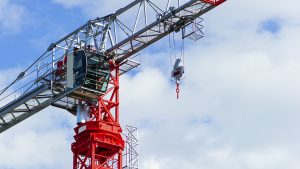According to the United Nations Emissions Gap Report 2020, steel accounts for seven per cent of global CO2 emissions, very similar to concrete. Pressure has been increasing on the industry to change the way steel is processed in order to reduce its carbon footprint.
The production of forged steel can be environmentally messy. Steel is an alloy of iron and carbon containing small quantities of silicon, phosphorus, sulphur and oxygen. Iron ore is heated and melted in blast furnaces usually fuelled by metallurgical coke. Impurities are removed and carbon added.
However, steel can also be recycled. In fact, according to the Canadian Sheet Steel Building Institute, “The overall recycling rate for steel from all industries combined is 81 per cent, with some construction segments reporting values as high as 98 per cent.”
The recycling of steel from the old Champlain Bridge is an excellent example.
Although some scrap steel is reprocessed in blast furnaces, most is reprocessed using an electric arc furnace (EAF). The increased use of EAFs in Canada and around the world is where the greatest progress to reduce steel’s carbon footprint has been made.
Provincial and federal governments are encouraging the transition to EAFs through significant investments.
Last July, the federal government invested $400 million as part of ArcelorMittal Dofasco’s $1.7-billion project to phase out of coal-fired steelmaking at its Hamilton, Ont. facility. A government news release said the project will reduce annual CO2 emissions by up to three million tonnes by 2030.
Similar initiatives and government investments have been undertaken at Algoma Steel in Sault Ste., Marie. The Ontario government announced this past November that it would add $60 million to the federal support of $420 million towards Algoma’s facility upgrades. These are expected to reduce the company’s carbon emissions by 70 per cent.
In a statement, the Ontario government said, “Electrification of steel production at Algoma Steel will leverage Ontario’s clean energy advantage, positioning Sault Ste. Marie as a world leader in the production of green, low emission steel.”
“Shifting to electric arc steelmaking will significantly lower GHG emissions while enhancing our competitiveness,” said Michael McQuade, president and CEO of Algoma Steel.
Clean sourcing of the electric power is fundamental to delivering the environmental benefits of EAFs. Ontario and other parts of Canada can be proud of their clean grids due to the large proportion of electricity generated from non-fossil sources like hydro and nuclear.
Further motivation to invest in electric power comes from projected increases in carbon taxes. For example, federal carbon taxes will quadruple by 2030, from the current rate of $40 per tonne to $170 per tonne.
Growing awareness and importance of measurable ESG policy metrics will also have an impact on future procurement, boosting demand for steel repurposed from recycled scrap and created in electric arc furnaces. In fact, Canada is a signatory to the Industrial Deep Decarbonization Initiative developed at COP26 requiring that green factors be considered in the purchase of materials such as steel.
Canada joins the United States in making North America one of the cleanest places in the world to make steel. According to the American Iron and Steel Institute, “of the seven largest steel producing countries, the U.S. has the lowest CO2 emissions per tonne of steel produced and the lowest energy intensity.”
Nucor Corporation based in Charlotte, N.C., is one of several major U.S. producers to make major commitments to CO2 reduction. Electric arc furnace technology has cut the company’s GHG intensity by 70 per cent at its 24 mills. Nucor announced this year it will be offering net-zero steel across all its product lines under the brand name EconiqTM.
“The Econiq certification will cover all of Nucor’s steelmaking product line, the most comprehensive in the U.S. market,” the company says.
Given that steel will remain a fundamental material in construction for the foreseeable future, the development of low-carbon, circular manufacturing processes represents a responsible step forward.
John Bleasby is a Coldwater, Ont.-based freelance writer. Send comments and Climate and Construction column ideas to editor@dailycommercialnews.com











Recent Comments
comments for this post are closed